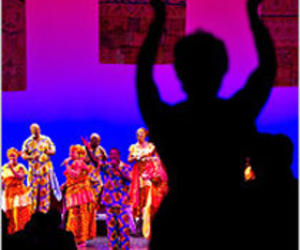Cuban Visitors Share Sounds and Moves of Their Roots
- Submitted by: manso
- Arts and Culture
- 06 / 06 / 2011

June 5, 2011. By JON PARELES. The latest on the arts, coverage of live events, critical reviews, multimedia extravaganzas and much more. The choir members are also products of Cuban music schools, where the precision of classical technique doesn’t restrain the power of island traditions.
The choir was a spinoff of the Professional Choir of Camagüey, formed in 1994 by Emilia Díaz Chávez. From a repertory of old and recent Haitian songs it has developed a traditionalist hybrid that is sleek, theatrical, socially conscious and full of joyful life. The performers have eye-popping, African-patterned costumes and strutting, hip-grinding dance moves — some coordinated, some solo flourishes. Like the Soweto Gospel Choir from South Africa, the Creole Choir of Cuba merges spirit and showmanship. Every so often a singer would head into the audience, perhaps to return with a fan to dance onstage.
The choir’s arrangements are meticulously multilayered. Often men sing bass-note syllables (as in a doo-wop group), and men or women share harmonies elaborately syncopated against them; sailing across the intricacies is a lead vocal that might be a sustained soprano melody, like a spiritual, or a hearty exhortation.
“Fey” (“Leaf”), with lyrics about a mother mourning the absence of a son deported for political offenses, set a melodic alto lament far above a subdued male bass riff, with other women’s voices cascading into harmonies in the lonely space between between. “Tande” (“Listen”), written by the Haitian rocker Eddy Francois, denounced the abuses of the Duvalier regime with insistent voodoo-tinged percussion and a furious, righteous male lead. There was comedy too: “Ou Pa Nan Chaj” (“You Are Not in Charge”) brought out the shortest of the male singers to be pushed around by the rumps of dancing women, though his voice was robust.
Most of the songs, even those telling sad stories, sounded celebratory, with brisk Haitian rhythms and endlessly inventive vocal combinations: quasi-classical chorales, call-and-response, polyphony and oom-pahs, all communal and indefatigable. The choir also brought familiar Cuban songs, like “Son de La Loma,” as well as an elegant close-harmony version of “Unforgettable” and a Ping-Ponging arrangement of “Joshua Fit the Battle of Jericho.” By then its Creole songs had long since won over its first United States audience.
A full schedule for the ¡Sí Cuba! Festival in New York is available at sicuba.org.
Source: www.nytimes.com/2011/06/06/arts/music/creole-choir-of-cuba-in-si-cuba-fe...
Comments